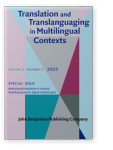Accessibility and reception studies at the Macerata Opera Festival
This essay discusses an audience reception study carried out within the framework of media accessibility to
evaluate the experience of blind/partially sighted patrons and their (sighted) accompanying persons in the context of the Macerata
Opera Festival (MOF). Adopting a qualitative analytical approach, feedback was collected from individuals in the sample who
completed post-hoc self-report questionnaires, and three interdependent variables were measured: (a) comprehension and recall, (b) cognitive load, and (c) psychological immersion. This qualitative analysis was combined with a descriptive methodology, using
attitudinal data to evaluate the lived experience of individuals, notably their appreciation and preferences. Results revealed
that there was no substantial divergence in the values of the variables recorded for the two groups in the sample: blind/partially
sighted and sighted (accompanying) patrons. Additionally, audio descriptions and tactile tours increased psychological immersion,
without provoking cognitive overload. Furthermore, high levels of appreciation and preferences were related to comprehension and
recall, cognitive load, and psychological immersion. This confirms the effectiveness of audio descriptions and tactile tours in
enhancing the engagement and empowerment of blind/partially sighted members of the audience.
Article outline
- 1.Introduction
- 2.The questionnaire
- 2.1The research variables
- 2.2Structure and administration
- 2.3Sample
- 3.Results
- 3.1
Section 2: Comprehension and recall
- 3.2
Section 3: Cognitive load and immersion
- 3.3
Section 4: Appreciation and preferences
- 4.Concluding remarks
- Notes
-
References
